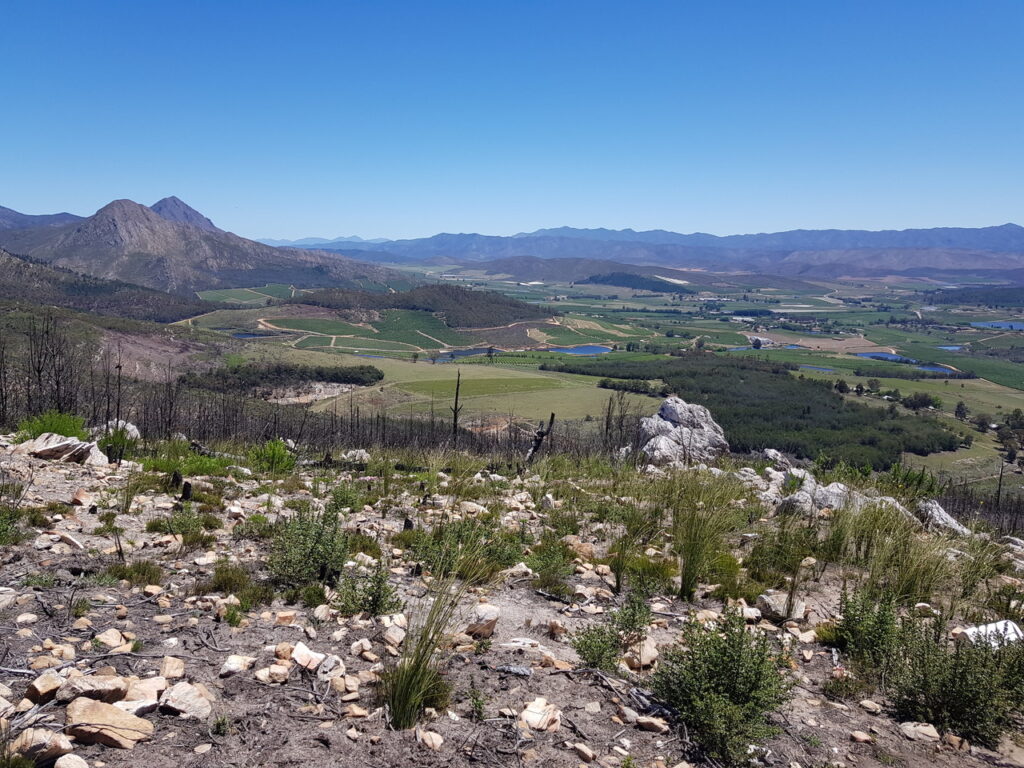Since 2022, the Southern African Resilience Academy (SARA) has supported collaborative working groups to pursue inter- or transdisciplinary synthesis research under the guiding theme of “Building equitable resilience in southern Africa.” The M&E (monitoring and evaluation) working group brought together six monitoring, evaluation and learning (MEL) practitioner-researchers from across South Africa, giving us a rare opportunity to reflect deeply on our practice and experience. Through this, we co-created a synthesis of “voices from practice,” offering an account of how M&E practitioners can use monitoring and evaluation in a way that builds equity and resilience.
In July, we met with members of the South African Monitoring and Evaluation Association’s (SAMEA) Community of Practice on M&E for a Just Transition. We were there to share what we have discovered about M&E for equity and resilience and ask for feedback on whether and how our insights resonated with their knowledge and experience of the field.
While all participants had an interest in integrating equity into M&E practice, backgrounds ranged from economics to education to human rights to environmental activism to climate change. Most of the participants were from South Africa and one person was from Malawi. They worked in NGOs, government, and companies. Some were MEL specialists and while others who had stumbled upon M&E in the course of their work.
Several participants had been involved in developing South Africa’s national Department of Planning, Monitoring and Evaluation’s transformative equity and climate & ecosystem health guidelines, including a member of the SARA team, and one participant was currently involved in developing the Just Energy Transition M&E plan. Another participant serves as an M&E advisor to the Presidential Climate Commission and is influential in government M&E circles.
What we offered
Using four of our case stories, we attempted to convey something of the richness of detail in the work we had drawn on, a sense of the geographical reach, and the diversity of our MEL approaches. Using the cases as illustration, we shared our four main insights from our work together, concluding with the question:
‘Which of these ways that inequity shows up in M&E practice resonate with your experience?’
Themes and insights out of conversation in the session
1. The more M&E is embedded in a system, the more it can support aspirational values like equitable resilience and a Just Transition.
The experience of the members resonated with the view that while short ‘in-out’ framed evaluation (mid-term and terminal) was a normal reality for many, this was limited, and that M&E embedded as part of the whole project held much more potential to support equity and resilience.
It was noted that it was likely that big interventions into M&E thinking and systems (like the SAMEA guidelines) may start off being mostly focused on our insight 1 (that M&E practitioners should try to understand and measure equity, and its contribution to resilience in whatever context was appropriate). However, it was recognised that there is always the prospect of taking that further in M&E design, to work with our other, more systemic insights (2, 3 and even 4).
Furthermore, everyone recognised that to work with this emphasis and interest would ask something different of M&E practitioners and associations – that it could not be business as usual; and that this would require ongoing advocacy by all of us to embed the thinking and practice of M&E for equity and resilience into whole systems.
2. Achieving M&E for Equitable Resilience / Just Transition is a process
The importance of articulating the potential of M&E for equity and resilience, across multiple levels and all parts of the system, was recognised as was the value of efforts like ours and the need to keep thinking broadly across the whole system.
Taking this further, it was acknowledged that while design for M&E as an embedded function is rare and hard to resource, practitioners could still try to bring this sensibility in, through whatever opportunities exist. M&E stretches across a whole range of organisational practices (from in-house M&E, embedded in programmes, to external and commissioned, discrete and separate from the programme) and is possible to adjust practice, whatever form it takes, to support equity and resilience.
This could include rising to the challenges to work with evaluation commissioners to programme for M&E for learning and with programme designers to programme for M&E from the start (knowing that this also supports greater equity and resilience in the system).
3. The importance of capacity building to promote equitable M&E.
Finally it was recognised that this way of seeing M&E and its potential to support both equity and resilience is needed from all, that is, researchers, practitioners, commissioners and participants alike.
This reinforces the need for a framework and principles to guide equitable practice. We have the Department of Planning, Monitoring and Evaluation’s (DPME) guideline on transformative equity, and the African Evaluation Principles. It may be that we could add to these.
Out of this discussion, we were left with a question:
Is there something useful we could synthesise from our work in light of these existing principles and this need?
Packaging our learning for practitioners and policymakers
This experience helped us to design our Practice and Policy Brief for practitioners and policymakers. Where we link to existing guidelines and frameworks for equity. Our four key insights can build on the DPME evaluation guidelines, extending the scope and the scale of how equity is considered and highlighting a more systemic view of equity within M&E practice.
It is useful to highlight the importance of collecting evidence for the “co-benefits” of inclusive, equitable M&E. These benefits go beyond M&E, for example to agency, motivation, relationships, networks, social cohesion, coherence, and changes in power relations. It is important to be able to provide convincing evidence of these benefits, given that being more inclusive and equitable takes longer and requires more and different resources.
